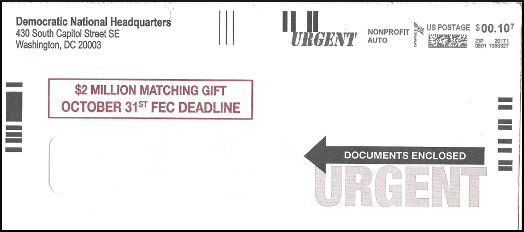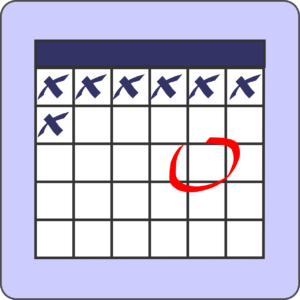10 Secrets to Blowing Past Your Matching Grant Fundraising Goals – Especially in the Covid Era
Tips to Elevate Your Email and Direct Mail Match Campaigns
Matching grants are a tried and true fundraising strategy. And for good reason.
Whatever you give, the gift is doubled (or tripled, or whatever multiple you have secured). The math is easy. The feeling of impact is greater. It connects smaller donors to larger ones and makes everyone feel like they’re in this together on the same team.
You will usually raise more money with less effort if you can incorporate a matching grant into your campaign. And this applies to end of year fundraising, Giving Tuesday (get a 4-step Giving Tuesday planning guide), fundraising events, capital campaigns, and pretty much any other fundraising campaign.
And during the Covid era, matching grants work even better, because everyone knows and understands the need. Selling donors on how much their support is needed is much easier right now than in normal times, though this is more true for some nonprofits compared to others.
 But, as great a tool as matching grants are, like any tool they can be misused and underused.
But, as great a tool as matching grants are, like any tool they can be misused and underused.
A matching grant for fundraising is kind of like when the original Super Mario used to get the ‘invincible star’. Then, he could run faster, go farther, and defeat any enemy. But, eventually, the power would run out, and he still had to work hard to finish the level. And if he wanted to, he could just stand there and waste the power, not use it to its full potential.
With credit to Future Fundraising Now, which mentioned some of these tips in one of their newsletters, here are 10 secrets to raising the most money you possibly can the next time you get a matching grant.
1. Put the Matching Grant Outside the Envelope
For direct mail matching grant campaigns, the outside of your envelope should mention the match. Don’t require the recipient to open the letter before they see the match. Matching grants sell themselves and nearly always increase response, so get as many people to see it as possible.

2. Include the Match in at Least One Email Subject Line
For email matching grant campaigns, do not just send one email. Write a series of emails spread out across the campaign. And include the matching grant in at least one of your subject lines.
You want everyone on your email list to know there is a matching grant. So even if they don’t open the emails, they will see that you have a match campaign going if it appears in the subject. See the 7 best types of email subject lines.
3. State the Impact
Be sure to spell out the impact in clear terms. If it’s a doubling matching grant, use the word ‘double’, or ‘2x,’ or ‘have twice the impact.’ If it’s a triple match, follow the same approach. In direct mail, this language should be part of your headline. They should not have to read any of the letter to know how much their gift will be matched.
4. Restate the Match Impact Repeatedly
Don’t just say something like “Double your gift through a matching grant up to $20,000” one time.
Inject all the copywriting with similar language. Use phrases like ‘Your gift doubles’, ‘2x your gift’, and ‘double your impact’ so that no matter how little or how much of your fundraising copy gets read, the reader will be reminded about the matching grant.
In direct mail, the match should be stated at the top of the page, in the PS, and several times throughout the letter. The longer the letter, the more times the match should be mentioned. And don’t forget the reply device – restate the match there yet again.
5. Show Them the Money – Do the Math

Image by OpenClipart-Vectors from Pixabay
Not everyone is good at math. But even for those who are, seeing the dollar amounts of what happens to their gift provides a major incentive to donate. So include a ‘math lesson’ in your fundraising copy. For instance:
$25 doubles to $50
$50 doubles to $100
$250 doubles to $500!
I think this appeals to that ‘inner gambler’ we probably all have to some degree. Even the most miserly and frugal person likes free money and will respond if they think the opportunity is good. Seeing the numbers spelled out like that feels like free money. Even though the donor doesn’t receive the money, it feels to them as if they are giving twice as much. Use this psychological effect to your advantage.
6. Always Use a Deadline – and Not too Far Out
Deadlines are essential when running a matching grant campaign. Come up with a reason for why you have a deadline so it doesn’t just feel arbitrary. Even if that reason is just that the donor who gave the matching grant wants to send the money by a certain date, use it. That’s not a great reason, but it’s reason enough.

Image by Clker-Free-Vector-Images from Pixabay
A deadline invokes urgency and prevents people from dragging out their decisions. You are trying to motivate an ‘impulse decision’ to just give, because it’s now or never if they want their money to be matched.
Deadlines work, not just in fundraising, but in sales and marketing for businesses. People take action when a deadline forces them to. Without a deadline, procrastination forestalls response.
For that same reason, you don’t want a matching campaign deadline to be three months away. That’s too long. With so much time, the deadline loses its power. Marketing guru Bill Glazer recommends for businesses to never use a deadline more than two weeks from the start of a marketing campaign.
Matching grant campaigns can go longer than that. I have seen them go for one month and do very well. But be careful letting it go much beyond that.
7. Send an Email Update Midway through the Campaign
The Principle of Momentum has limitless power. Use it whenever you can. And there is almost no better time to do so than in a matching grant campaign.
In the middle of your campaign, before you have reached the match, send out an email updating your supporters on the progress toward the match. Ideally, you can do this when you’re over halfway toward the match. This way, it feels like the end is in sight.
So for a $20,000 match, once you’ve raised somewhere in the $11-14k range of money, send out an email that announces how close you are to completing the match and restates the deadline. Use language like this:
“We’re $xyz away from matching the $20,000, but there are only five days left.”
Bonus Tip: Use Multiple Media – Email, Direct Mail, Social Media, and More
By the way, this is also a reason to use both direct mail and email in your campaign, as well as social media. You can’t send an update using direct mail because in a one-month campaign, there simply isn’t enough time, and the update would already be wrong by the time it arrived in mailboxes.
But with email and social media, you can send real-time updates.
Need Help with Your Fundraising Emails?
Email fundraising copywriting is our number one service requested by nonprofits.
Learn more about email copywriting from ProActive Content.
8. Send More Updates as Deadline Nears
Especially if the match still hasn’t been reached and the deadline is just a few days away, send more email and social media updates showing how close you are to the match.
If you’ve already surpassed the match before the deadline, I would recommend not revealing that. Instead, focus on the deadline, that there are just a few days left to give.
9. Focus Your Fundraising Copy on the Need for the Match – the Urgency
This is one of the more common mistakes I see in matching grant campaigns. The urgency in a matching grant campaign should not be simply that ‘we’ have a match and we need to meet it. Help us raise money because it will raise more money. No.
That redundant language doesn’t arouse the passion to give and make an impact as much as if you can tie your matching grant to a specific or urgent need. Even for a year-end or Giving Tuesday campaign, find a particular need within your mission and focus the grant around that. Or if that’s too hard, fixate on the people impacted through your mission.
The idea is, focus on the impact, not just on the fact that ‘we’ have a matching grant and don’t want to “waste” it.
It’s not about ‘we.’ It’s about the donor.
Why did this donor (or these donors) give this match? What is the purpose? Why now? Those are your reasons to run the matching grant campaign. Because that’s what your donors will latch onto when they give. They want to know what their money is doing, and who it is helping.
10. Release Results – with Thank You Notes – ASAP
In any campaign with a specific financial goal, but especially a matching grant one, donors want to know if the goal was reached. Don’t keep them waiting!
You should know the very next day, except for the direct mail component, how much money was raised. Send out a thank you email the day after the deadline that clearly states how much was raised, and combine the match with the total donated. If you think you may still have some direct mail gifts coming in, include that in the note. Just say that more may be in the mail, but this amount has already been received.
And again – thank them profusely, remind them the impact they’ve had, and make them feel great about giving to your campaign.
Here are 16 tips on where and when to thank donors
Want more content? Get weekly nonprofit fundraising and copywriting tips, strategies, and motivations in the ProActive Insights newsletter.

